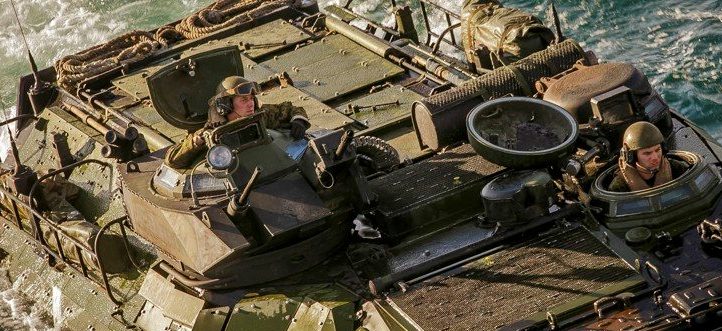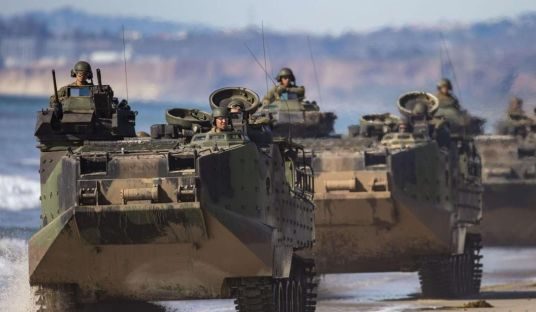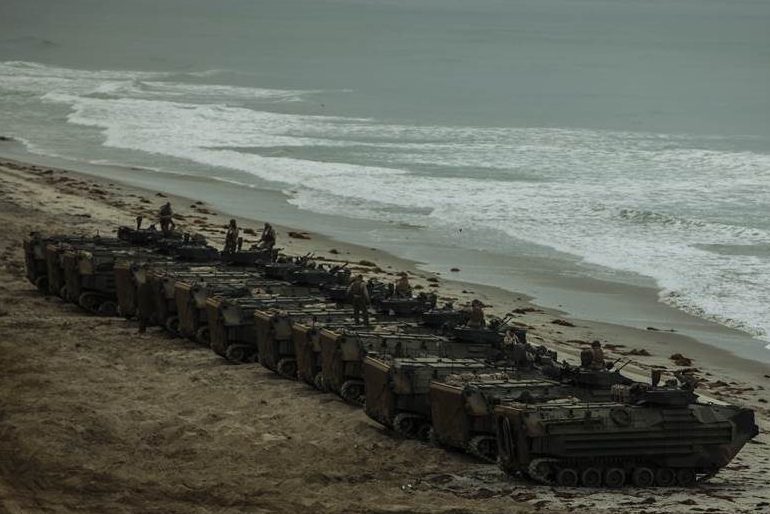More than half of the amphibious assault vehicles leak, emergency escape training is insufficient… The revelations by senior Pentagon officials recently gave the U.S. Marine Corps a “loud slap” in the face as they seek to make a big presence in the Pacific island-snatching battle. And all this came to light because of a training accident in 2020 that killed nine U.S. military officers.
U.S. Marine Corps Chief of Staff Greg Olson attended a congressional hearing the same day confirmed that the current amphibious assault vehicles can not meet the standards of combat readiness, coupled with years of ground combat in the Middle East and the loss of amphibious combat capabilities, the Marine Corps’ combat readiness is not enough to respond to water combat, let alone in the Pacific with China to launch a “great power competition.”
In July 2020, eight Marines and one sailor were killed when an amphibious assault vehicle (AAV) of the 15th Expeditionary Unit of the U.S. Marine Corps sank into the water during routine training. The U.S. military later found that the immediate cause of the accident was a leak in the vehicle.

But! Olson acknowledged that a broader investigation showed that not only did the training accident amphibious assault vehicles leak, but that even the entire U.S. Marine Corps amphibious assault vehicle could not meet operational standards. Reported that in April 2020, a total of 13 amphibious assault vehicles were allocated to the Marine Corps 15th Expeditionary Detachment, of which 12 were unusable. After months of restoration, the Marines believe the amphibious assault vehicles were equipped to perform water combat operations in July.
Then, in Training In July, One Of Them Sank…
Accident investigations revealed that the amphibious assault vehicles were unable to conduct water combat at all. A broader survey also showed that more than 54 percent of Marines’ amphibious assault vehicles “did not meet watertight integrity standards.” “Our investigation found problems with the watertight integrity of the entire Marine Corps amphibious assault vehicle.”
Even so, the U.S. Marine Corps insists that the problematic amphibious assault vehicle remain in service until 2026. Why, naturally, there is still no money to replace a new generation of amphibious chariots…
The survey also found that, in addition to problems with the maintenance of amphibious assault vehicles, inadequate training of personnel is also a major problem. Many Marines have not even completed their training on how to escape from flooded vehicles. As a result, when the amphibious assault vehicle accident, lack of adequate training led to the death of nine U.S. military officers and soldiers unable to escape.

Olson concluded that 20 years of the war on terror in the Middle East have left U.S. Marines busy fighting on the ground and losing their amphibious combat experience. Now that the U.S. Marines are adjusting their positioning and naval warfare is back as the theme of the future, it is only then that they are alarmed that they have lost their ability to amphibious operations. According to the U.S. Marine Corps’ planned 2030 Force Design, it will be built as a maritime expedition with strong combat power and high readiness, but the amphibious assault vehicle tragedy in 2020 is a powerful slap in the face to the top of the U.S. military, showing that there is still a long way to go.
By the way, the old driver again reminded that the U.S. military this “normal leakage” amphibious assault vehicles, Taiwan has also introduced a lot of second-hand goods.



